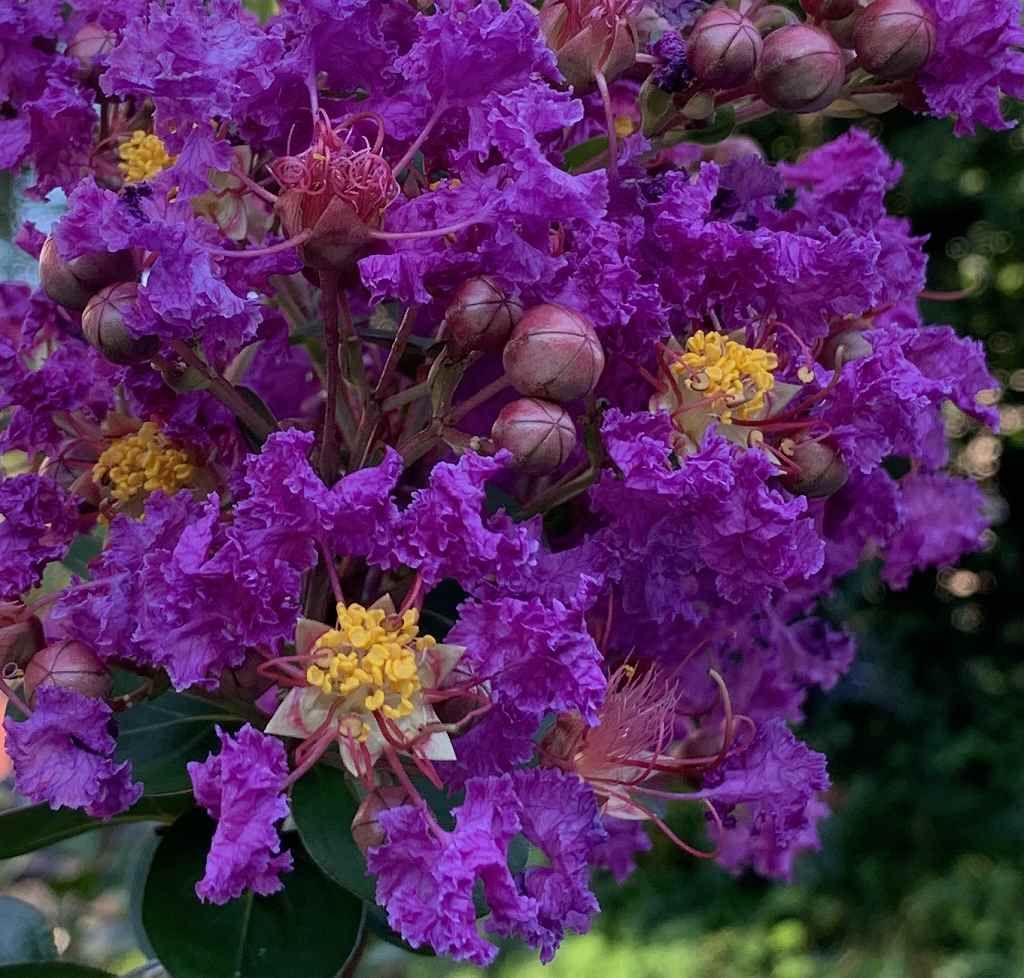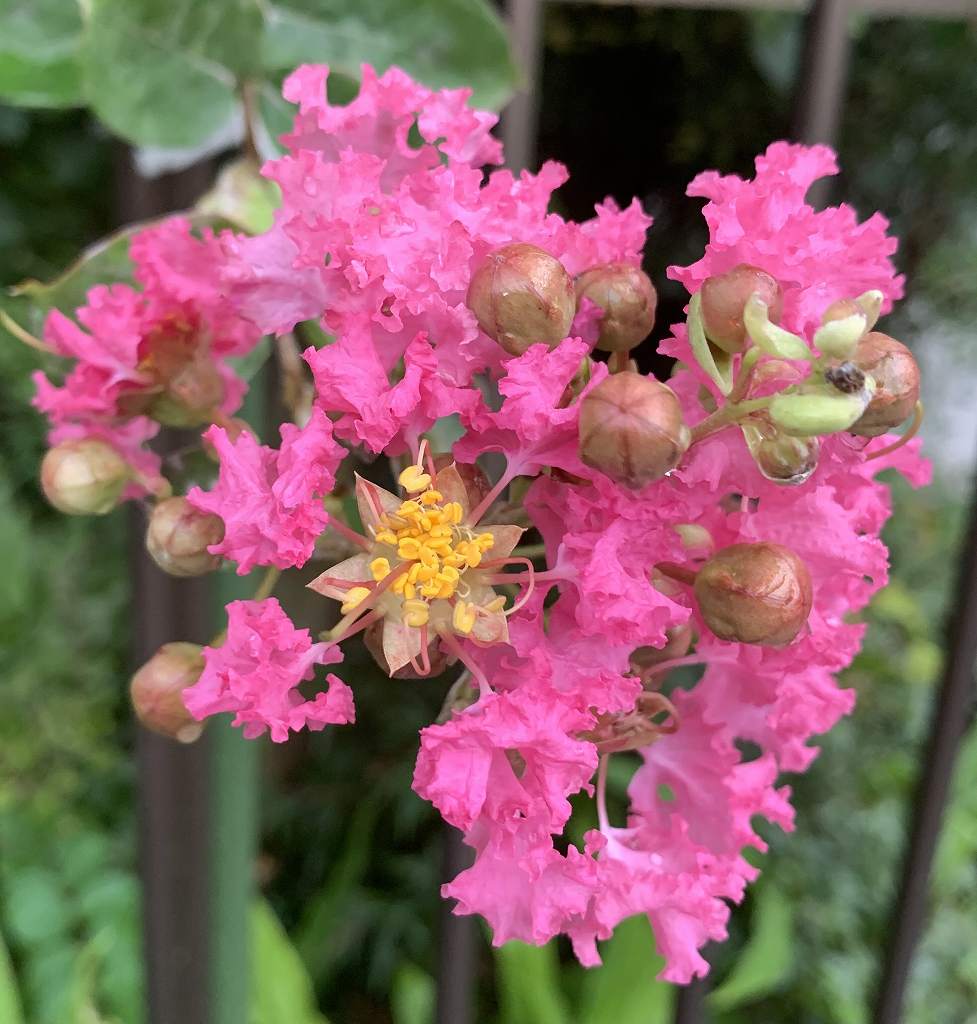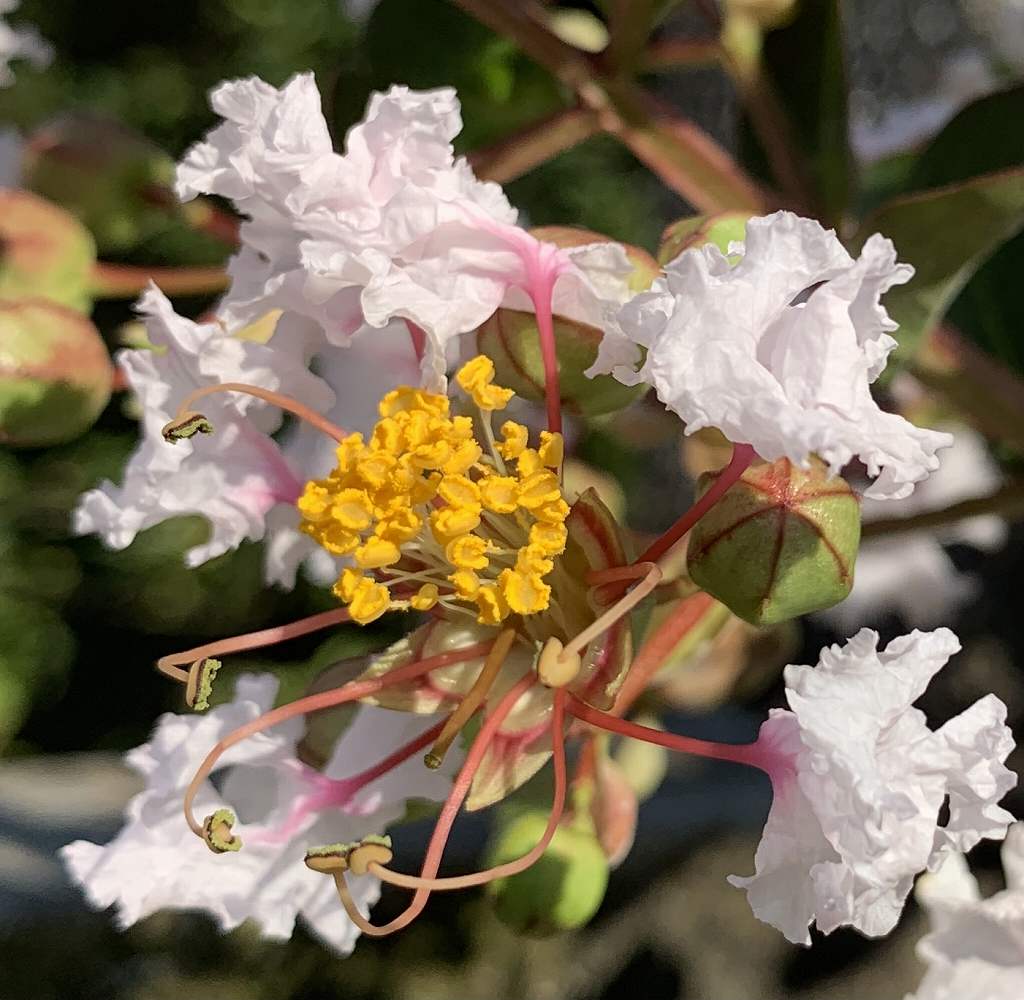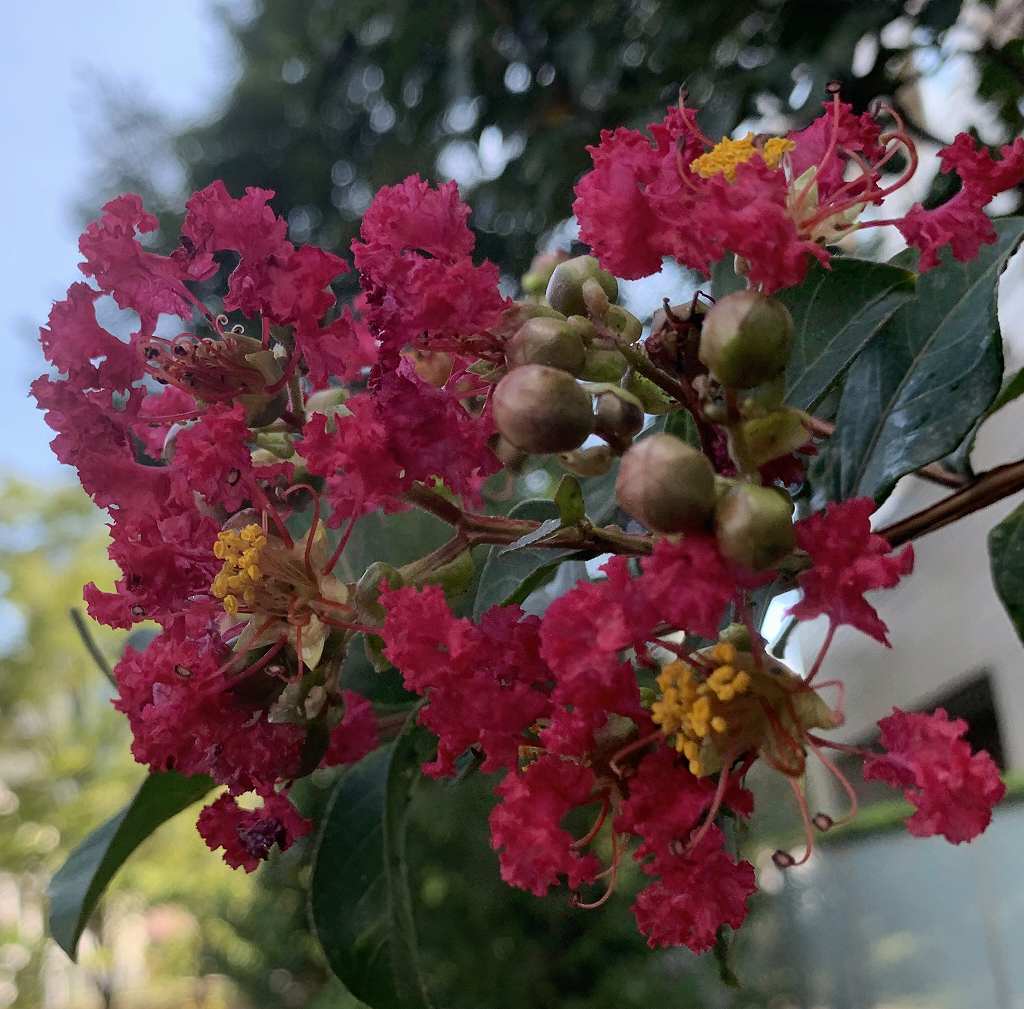サルスベリの呼び名の由来は、幹が滑らかでサルが上れないから。漢字の由来は、夏の盛りに長い間、紅色の花を咲かせ続けるから。
The origin of the name of crape myrtle is that the trunk is smooth and monkeys cannot climb. The origin of the kanji is that the crimson flowers continue to bloom for a long time in the height of summer.
【仮名】サルスベリ, ヒャクジツコウ, シビ
【和名】百日紅, 猿滑, 紫薇
【英名】Crape Myrtle
【学名】Lagerstroemia indica
【誕生】07/ 18, 07/ 24, 07/ 31, 08/ 05, 08/ 27, 08/ 29
【開花】07, 08, 09, 10月
【花色】White, Pink, Red, Purple




サルスベリ
サルスベリの原産地
サルスベリはミソハギ科の落葉中高木です。原産地は中国南部。名前の「滑る」は縁起が悪そうですが、花が美しく、耐病性もあり、よく庭や公園などに植えられます。材は細工用にも。
サルスベリと猿滑
サルスベリの幹は古い樹皮が剥がれ落ち、滑らかな樹皮が現れます。サルが登ろうとしても、幹の表面がツルツルだから猿滑。でも実際はサルが滑ることなく容易に上れるそうです。
サルスベリと百日紅
中国では、サルスベリが夏の盛りに長い間、紅色の花を咲かせ続けることから、百日紅と名づけられました。一方、英語の名前 Crape myrtle は花弁が縮れたギンバイカという意味です。
サルスベリの花言葉
サルスベリの花言葉は、サルが滑る様子から「愛嬌」、花が枝先に群がり咲く様子から「雄弁」。また、雄弁は枝を揺すると葉や花が盛んに話しているように見えるからでもあります。
Crape Myrtle
Origin of crape myrtle
Crape myrtle is a deciduous middle-high tree of the Lythraceae family. The place of origin is southern China. The name “slip” seems to be unlucky, but the flowers are beautiful, it is disease resistant, and it is often planted in gardens and parks. The material is also for work.
Crape myrtle and crape myrtle
The old bark of the crape myrtle trunk is peeled off, and a smooth bark appears. Even if the monkey tries to climb, the surface of the trunk is smooth, so it is crape myrtle. But in reality, it seems that monkeys can easily climb without slipping.
Crape myrtle and crape myrtle
In China, crape myrtle was named Hyakunippon because it keeps its crimson flowers blooming for a long time in the height of summer. On the other hand, the English name Crape myrtle means myrtle with curly petals.
Crape myrtle flower language
The flower language of crape myrtle is “loving” from the appearance of monkeys sliding, and “eloquent” from the appearance of flowers swarming at the tip of branches. The eloquence is also because when the branches are shaken, the leaves and flowers appear to be talking actively.


